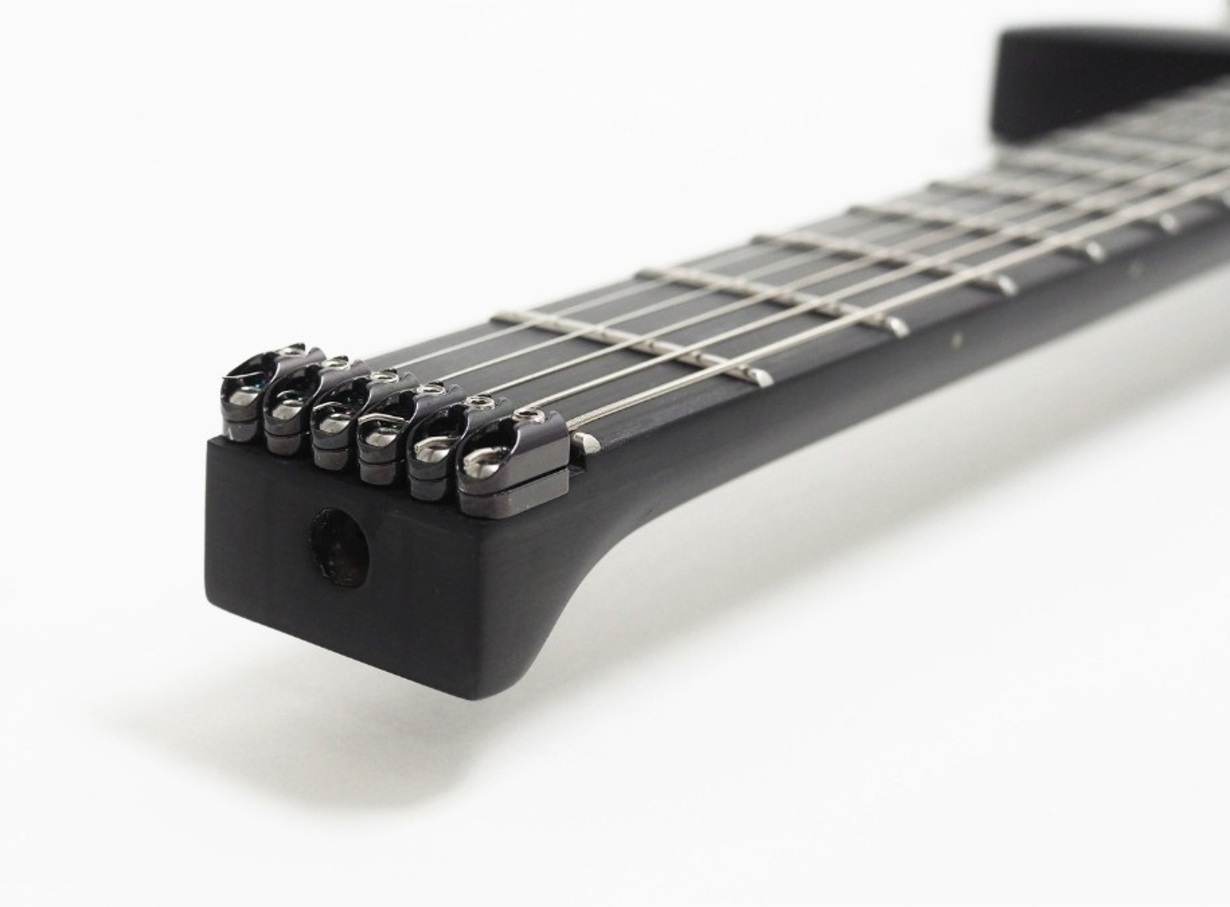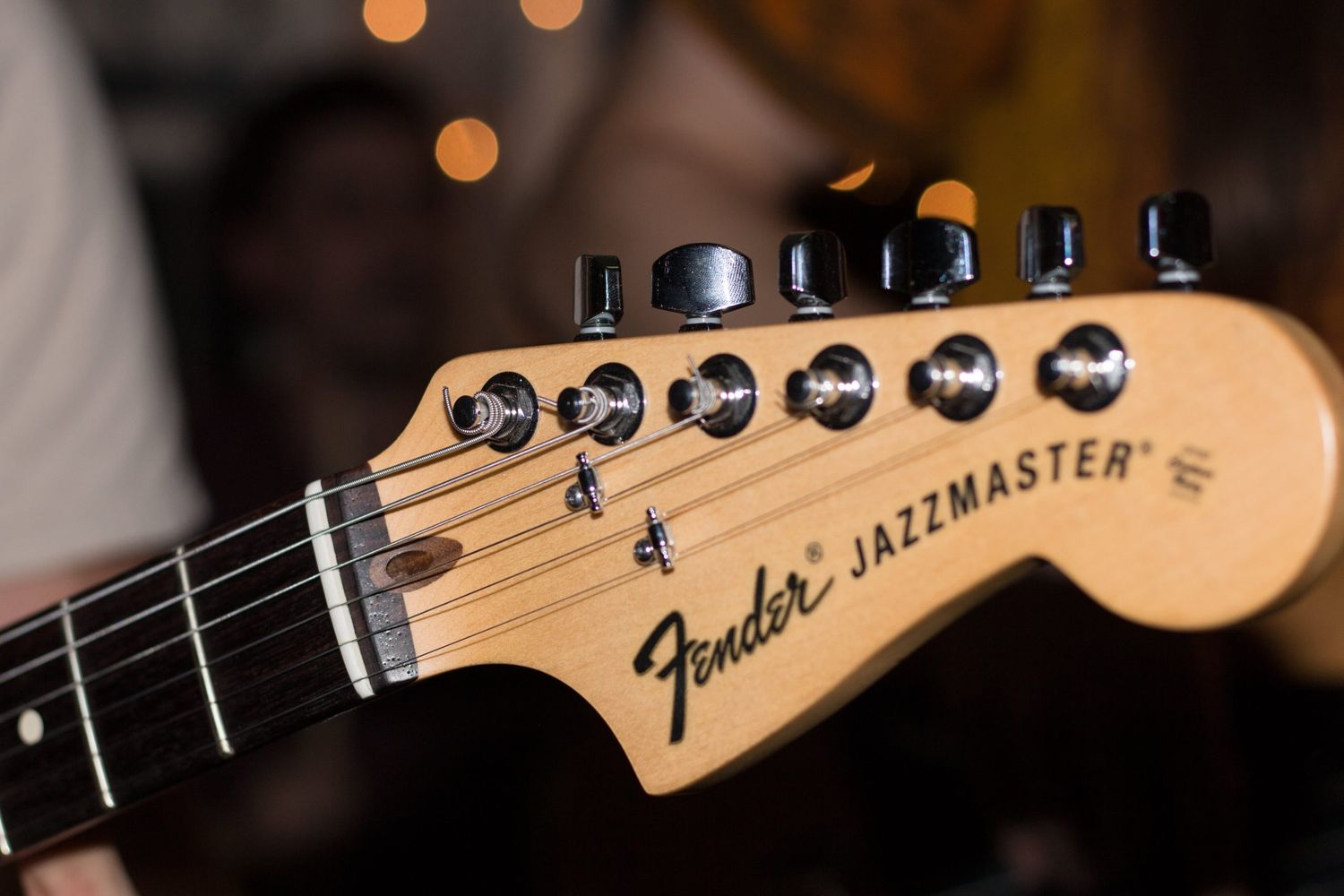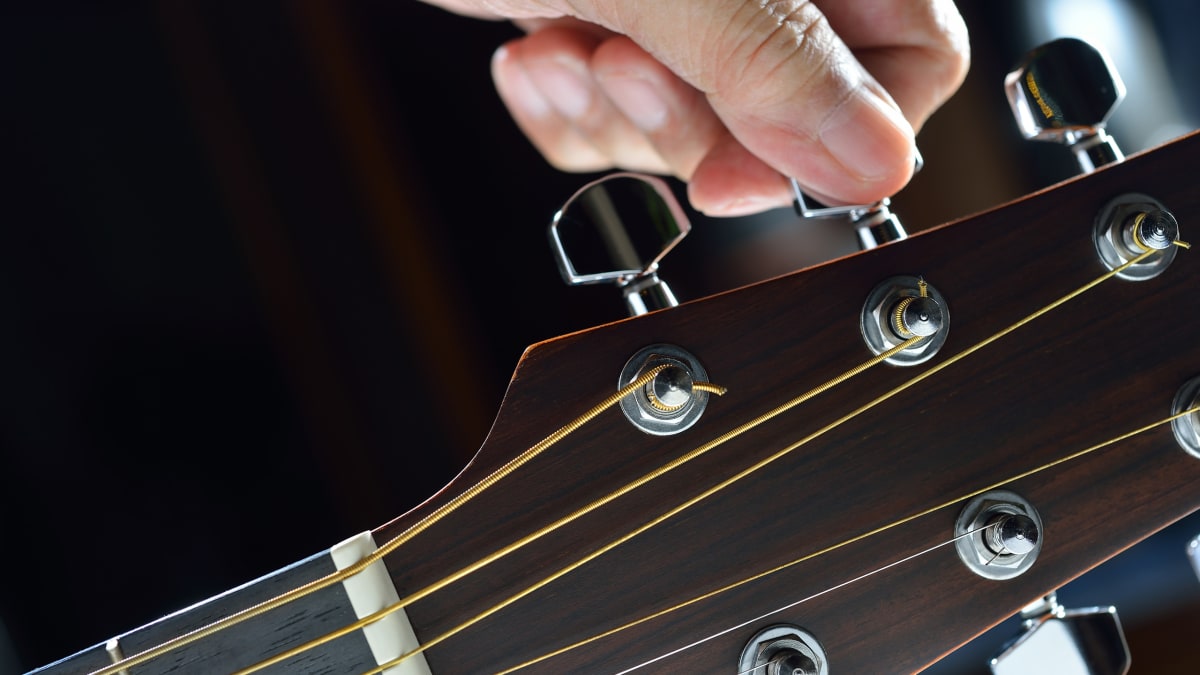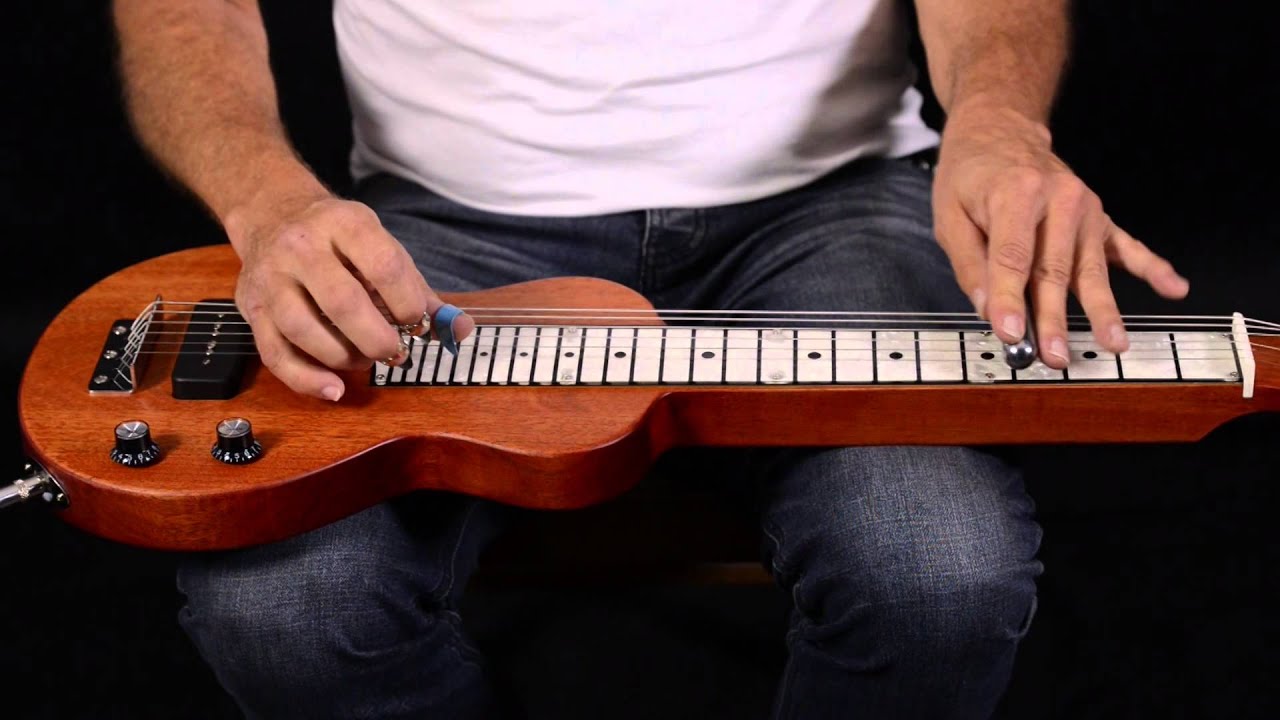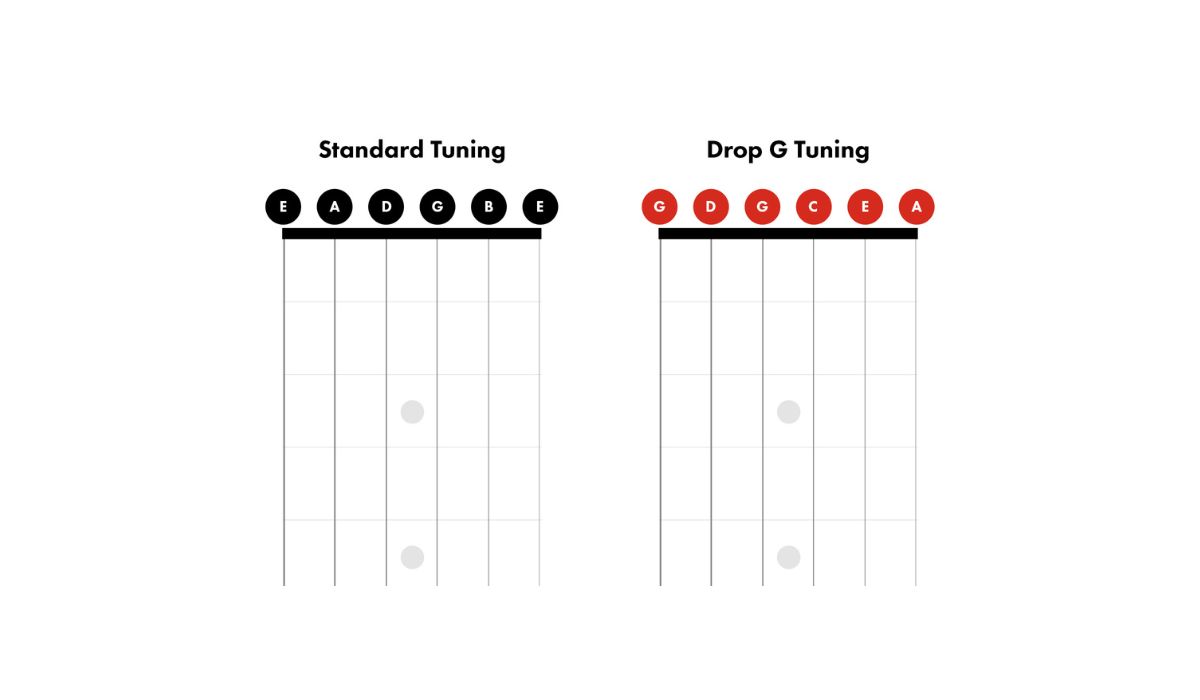Home>Instruments>Guitar>How To Tune A Guitar To D


Guitar
How To Tune A Guitar To D
Published: February 14, 2024
Learn how to tune a guitar to D and master the art of guitar tuning with our step-by-step guide. Keep your guitar sounding its best with our expert tips.
(Many of the links in this article redirect to a specific reviewed product. Your purchase of these products through affiliate links helps to generate commission for AudioLover.com, at no extra cost. Learn more)
Table of Contents
Introduction
Tuning a guitar to D, also known as Drop D tuning, is a popular alternative tuning method that can expand the sonic possibilities of the instrument. This tuning involves lowering the pitch of the lowest string, the sixth string, from E to D. The resulting DADGBE tuning offers a rich, deep sound and facilitates the playing of power chords with a single finger across the bottom three strings. Additionally, it can create a resonant, full-bodied tone that complements various musical styles, from folk and rock to blues and metal.
Understanding how to achieve D tuning is essential for guitarists seeking to explore new sounds and experiment with different musical genres. This comprehensive guide will walk you through the process of tuning each string to achieve the desired DADGBE configuration, providing step-by-step instructions to ensure accuracy and precision. Whether you are a beginner or an experienced guitarist, mastering the art of D tuning can open up a world of creative possibilities and inspire fresh musical expressions.
Throughout this tutorial, we will delve into the intricacies of tuning a standard six-string guitar to D, offering clear and concise guidance to help you navigate the process with confidence. By following these instructions and gaining a deeper understanding of D tuning, you will be well-equipped to harness the unique tonal qualities and harmonic richness that this alternative tuning has to offer. So, grab your guitar and let’s embark on this musical journey to unlock the captivating sounds of D tuning.
Understanding D Tuning
D tuning, specifically Drop D tuning, is a popular alternative guitar tuning that involves lowering the pitch of the sixth string from E to D. This adjustment enables the guitar to produce a deeper, resonant sound and offers a range of harmonic possibilities for players across various musical genres. With the standard tuning for a six-string guitar being EADGBE, the D tuning results in the configuration DADGBE.
One of the key advantages of D tuning is its facilitation of power chord playing, as it allows guitarists to create powerful, full-bodied chords with ease. This makes it particularly appealing for rock, metal, and punk musicians seeking to achieve a heavier, more aggressive sound. Additionally, D tuning can enhance the tonal richness and depth of acoustic guitar performances, making it a versatile option for folk, blues, and fingerstyle guitarists.
Understanding the nuances of D tuning involves recognizing the impact of the altered string pitches on chord voicings, scales, and overall tonal characteristics. By lowering the sixth string to D, guitarists can explore new chord shapes and progressions, unlocking fresh melodic possibilities and enriching their musical repertoire. Moreover, the lower pitch can add a distinctive depth to riffs and lead lines, elevating the sonic texture of the instrument.
Whether you are drawn to the raw power of distorted riffs or the emotive resonance of acoustic melodies, D tuning offers a versatile platform for musical exploration and self-expression. By comprehending the fundamental principles and sonic implications of D tuning, guitarists can harness its creative potential to infuse their playing with newfound depth and dynamism.
Tuning the 6th String to D
Before embarking on the tuning process, it is essential to ensure that your guitar is in a stable and secure position. Whether using a digital tuner, a tuning app, or tuning by ear, begin by focusing on the sixth string, which is typically the thickest string on a standard guitar. The goal is to lower the pitch from E to D, effectively transitioning from the standard EADGBE tuning to the desired DADGBE configuration.
If using a digital tuner, simply pluck the sixth string and observe the tuner display. Gradually adjust the tuning peg for the sixth string to lower the pitch until it aligns with the D note. Ensure that the string is neither too loose nor too tight, aiming for a clear, resonant sound that matches the D pitch on the tuner. Fine-tune the string as needed to achieve optimal tension and pitch accuracy.
For those tuning by ear, a reference point can be established by playing the open D string on a nearby instrument or utilizing a piano, tuning fork, or another reliable source to produce the D note. Once the reference pitch is established, pluck the sixth string on the guitar and adjust the tuning peg while comparing the pitches. Gradually lower the tension of the string until it harmonizes with the D note, ensuring that the sound is clear and in tune.
It is important to approach the tuning process with patience and attentiveness, making subtle adjustments to achieve the desired pitch without exerting excessive force on the tuning peg. By carefully honing the tension of the sixth string, you can ensure that it resonates with clarity and stability, laying the foundation for the remaining strings to be tuned to complement the DADGBE configuration.
Once the sixth string is successfully tuned to D, take a moment to strum the guitar and savor the rich, deep resonance that emanates from the instrument. This initial step sets the stage for the comprehensive D tuning process, marking the beginning of a transformative journey toward unlocking the full sonic potential of the guitar.
Tuning the 5th String to A
Having successfully tuned the sixth string to D, the next step in achieving DADGBE tuning involves adjusting the fifth string to A. This process is essential for establishing the harmonic integrity of the D tuning configuration, ensuring that each string resonates in harmony with the desired pitch and contributes to the overall depth and richness of the guitar’s sound.
To tune the fifth string to A, begin by plucking the string and comparing its pitch to the A note on a digital tuner or another reliable reference source. If using a tuner, adjust the tuning peg for the fifth string to increase or decrease tension until the string aligns with the A note, aiming for a clear and steady resonance that indicates precise tuning.
For those tuning by ear, the A note can be established using a reference point from a nearby instrument, a tuning fork, or a piano. Once the reference pitch is identified, pluck the fifth string on the guitar and carefully adjust the tuning peg to match the A note, ensuring that the string’s tension is optimized for accurate tuning.
As with the previous tuning step, it is crucial to approach the process with patience and attentiveness, making gradual adjustments to achieve the desired pitch without exerting excessive force on the tuning peg. By carefully honing the tension of the fifth string, you can ensure that it resonates with clarity and stability, harmonizing with the surrounding strings to form the cohesive DADGBE configuration.
Upon successfully tuning the fifth string to A, take a moment to appreciate the evolving harmonic richness of the guitar as each string aligns with the DADGBE tuning. This step brings you closer to fully realizing the resonant depth and expressive potential of D tuning, setting the stage for the subsequent adjustments that will complete the transformation of your guitar’s sonic landscape.
Tuning the 4th String to D
With the sixth and fifth strings successfully tuned to D and A, respectively, the next crucial step in achieving DADGBE tuning involves adjusting the fourth string to D. This process is integral to maintaining the harmonic integrity of the tuning configuration, ensuring that each string resonates in harmony with the desired pitch and contributes to the overall richness and depth of the guitar’s sound.
To tune the fourth string to D, begin by plucking the string and comparing its pitch to the D note on a digital tuner or another reliable reference source. If using a tuner, carefully adjust the tuning peg for the fourth string to increase or decrease tension until the string aligns precisely with the D note, aiming for a clear and steady resonance that indicates accurate tuning.
For those tuning by ear, the D note can be established using a reference point from a nearby instrument, a tuning fork, or a piano. Once the reference pitch is identified, pluck the fourth string on the guitar and meticulously adjust the tuning peg to match the D note, ensuring that the string’s tension is optimized for precise tuning.
Approach the tuning process with patience and attentiveness, making gradual adjustments to achieve the desired pitch without exerting excessive force on the tuning peg. By carefully honing the tension of the fourth string, you can ensure that it resonates with clarity and stability, harmonizing with the surrounding strings to form the cohesive DADGBE configuration.
Upon successfully tuning the fourth string to D, take a moment to revel in the evolving harmonic richness of the guitar as each string aligns with the DADGBE tuning. This pivotal step brings you closer to fully realizing the resonant depth and expressive potential of D tuning, setting the stage for the subsequent adjustments that will complete the transformation of your guitar’s sonic landscape.
Tuning the 3rd String to G
As you continue the journey toward achieving DADGBE tuning, the next essential step involves tuning the third string to G. This process is pivotal in maintaining the harmonic integrity of the tuning configuration, ensuring that each string resonates in harmony with the desired pitch and contributes to the overall richness and depth of the guitar’s sound.
To tune the third string to G, begin by plucking the string and comparing its pitch to the G note on a digital tuner or another reliable reference source. If using a tuner, carefully adjust the tuning peg for the third string to increase or decrease tension until the string aligns precisely with the G note, aiming for a clear and steady resonance that indicates accurate tuning.
For those tuning by ear, the G note can be established using a reference point from a nearby instrument, a tuning fork, or a piano. Once the reference pitch is identified, pluck the third string on the guitar and meticulously adjust the tuning peg to match the G note, ensuring that the string’s tension is optimized for precise tuning.
Approach the tuning process with patience and attentiveness, making gradual adjustments to achieve the desired pitch without exerting excessive force on the tuning peg. By carefully honing the tension of the third string, you can ensure that it resonates with clarity and stability, harmonizing with the surrounding strings to form the cohesive DADGBE configuration.
Upon successfully tuning the third string to G, take a moment to appreciate the evolving harmonic richness of the guitar as each string aligns with the DADGBE tuning. This pivotal step brings you closer to fully realizing the resonant depth and expressive potential of D tuning, setting the stage for the subsequent adjustments that will complete the transformation of your guitar’s sonic landscape.
Tuning the 2nd String to B
As you progress towards achieving DADGBE tuning, the next crucial step involves tuning the second string to B. This process is integral to maintaining the harmonic integrity of the tuning configuration, ensuring that each string resonates in harmony with the desired pitch and contributes to the overall richness and depth of the guitar’s sound.
To tune the second string to B, begin by plucking the string and comparing its pitch to the B note on a digital tuner or another reliable reference source. If using a tuner, carefully adjust the tuning peg for the second string to increase or decrease tension until the string aligns precisely with the B note, aiming for a clear and steady resonance that indicates accurate tuning.
For those tuning by ear, the B note can be established using a reference point from a nearby instrument, a tuning fork, or a piano. Once the reference pitch is identified, pluck the second string on the guitar and meticulously adjust the tuning peg to match the B note, ensuring that the string’s tension is optimized for precise tuning.
Approach the tuning process with patience and attentiveness, making gradual adjustments to achieve the desired pitch without exerting excessive force on the tuning peg. By carefully honing the tension of the second string, you can ensure that it resonates with clarity and stability, harmonizing with the surrounding strings to form the cohesive DADGBE configuration.
Upon successfully tuning the second string to B, take a moment to revel in the evolving harmonic richness of the guitar as each string aligns with the DADGBE tuning. This pivotal step brings you closer to fully realizing the resonant depth and expressive potential of D tuning, setting the stage for the subsequent adjustments that will complete the transformation of your guitar’s sonic landscape.
Tuning the 1st String to E
As you approach the culmination of the DADGBE tuning process, the final step involves tuning the first string to E. This crucial adjustment is essential for completing the harmonic integrity of the tuning configuration, ensuring that each string resonates in harmony with the desired pitch and contributes to the overall richness and depth of the guitar’s sound.
To tune the first string to E, begin by plucking the string and comparing its pitch to the E note on a digital tuner or another reliable reference source. If using a tuner, carefully adjust the tuning peg for the first string to increase or decrease tension until the string aligns precisely with the E note, aiming for a clear and steady resonance that indicates accurate tuning.
For those tuning by ear, the E note can be established using a reference point from a nearby instrument, a tuning fork, or a piano. Once the reference pitch is identified, pluck the first string on the guitar and meticulously adjust the tuning peg to match the E note, ensuring that the string’s tension is optimized for precise tuning.
Approach the tuning process with patience and attentiveness, making gradual adjustments to achieve the desired pitch without exerting excessive force on the tuning peg. By carefully honing the tension of the first string, you can ensure that it resonates with clarity and stability, harmonizing with the surrounding strings to form the cohesive DADGBE configuration.
Upon successfully tuning the first string to E, take a moment to savor the culmination of the DADGBE tuning process and appreciate the harmonic richness of the guitar. Each string now resonates in perfect harmony, collectively contributing to the full, resonant depth and expressive potential of D tuning. With the completion of this final step, your guitar is now primed to explore a myriad of musical possibilities within the captivating soundscape of DADGBE tuning.
Conclusion
Congratulations on successfully navigating the intricate process of tuning your guitar to DADGBE, a captivating alternative tuning that unlocks a world of harmonic richness and sonic versatility. By meticulously adjusting each string to align with the desired pitch, you have embarked on a transformative musical journey, expanding the expressive potential of your instrument and broadening your creative horizons.
As you strum the guitar in its newly achieved DADGBE configuration, revel in the resonant depth and harmonic complexity that emanate from each string. The rich, deep sound of D tuning opens doors to a diverse array of musical styles, from the raw power of rock and metal to the emotive resonance of folk and blues. Embrace the newfound tonal possibilities and let your creativity flourish within this captivating sonic landscape.
With DADGBE tuning at your fingertips, you now possess a powerful tool for crafting compelling melodies, exploring innovative chord voicings, and infusing your music with a distinctive depth and richness. Whether you are a seasoned guitarist seeking fresh inspiration or a beginner eager to delve into alternative tunings, D tuning offers an immersive experience that can invigorate your playing and ignite your passion for music.
Continue to experiment with DADGBE tuning, allowing its unique qualities to inspire and guide your musical explorations. Embrace the versatility of power chords, delve into new chord shapes and progressions, and let the resonant depth of D tuning elevate your compositions and performances. The journey toward mastery is ongoing, and each strum of the guitar in DADGBE tuning presents an opportunity to uncover fresh nuances and unlock the full potential of this captivating alternative tuning.
As you embark on this musical odyssey, remember that the art of tuning is not merely a technical endeavor but a gateway to artistic expression and sonic discovery. Let the resonant depths of D tuning fuel your creativity, and allow the harmonic richness of DADGBE to shape your musical identity and elevate your playing to new heights.
With DADGBE tuning as your sonic canvas, embrace the boundless possibilities that await and let your guitar resound with the captivating sounds of D tuning.

